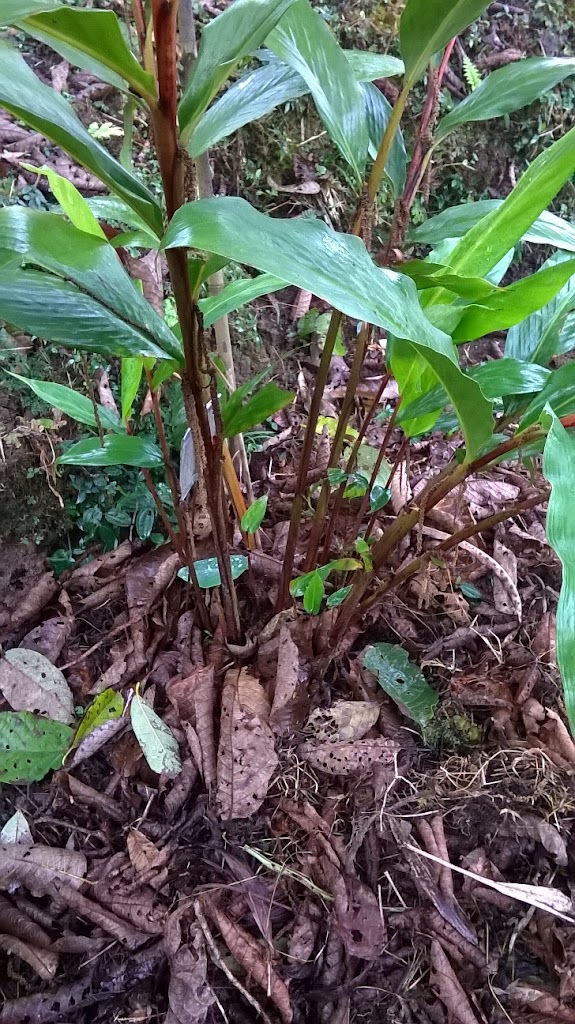Introduction
 |
|
Fig.1 Large cardamom plant mulched with dry leaves
|
Different types of organic mulches
Corn cobs, stalks, dried grass clippings, dried leaves, coffee grounds, compost, shredded bark, nut shells, peat moss, straw, chipped wood, sawdust, pine needles and coconut husk fiber (decomposed coir). Mulch generally refers to the dead vegetative material that covers the surface of the earth. It is also sometimes referred to as plant litter. Mulch can be divided into three classes that include ungrazed mature vegetation residues still attached to the plant (cured herbage), vegetation residues detached from plants covering the soil surface (ground litter), and decomposing residues partially or completely incorporated into the soil (humus). Large cardamom plants cannot thrive well under water stress conditions. The crop required watering at least once in 10 days during dry months from October to March for better growth in coming months. Mulching at the plant base with easily degradable organic materials is good for conserving both moisture and soil. Mulching helps to retain soil moisture for longer time and irrigation can be delayed for 15 to 20 days.
Advantages of organic mulches
 |
|
Fig. 2 Large cardamom plantation under 50 per cent shade
|
Covering the ground with a mulch layer protects the soil from forming a crust. This allows the rainwater to infiltrate and thus decreases water erosion. Moreover, the mulch layer protects the soil particles from being carried away by strong winds, i.e. it decreases wind erosion. The mulch layer protects the soil from extreme rainfall, winds or drought. Together with increased infiltration, this ensures that the moisture content in the soil remains higher than in soil without a mulch layer. It will thus take longer in the dry season for crops with mulch layer to be short of water. The temperature of exposed soil can become high during the day. By applying a mulch layer, the sun is blocked and the daytime temperature is lower, subsequently night temperature will be increased, which is favourable for seed germination, the crops root growth, and for the growth of micro-organisms. Some organisms in the soil can profit so much from the higher moisture content and protection from high temperatures that they proliferate under the mulch layer. Mulching with organic materials compared to mulching with organic materials is: the decomposition of the mulch increases the level of organic matter in the soil and helping attract many species which significantly improve soil texture and soil fertility (Sam Adams 2012). Soil formation is a very slow process. A thousand years or more are required to form an inch of soil. However, several inches of soil can be lost from erosion in less than a decade under poorly controlled by rainfall. The most important part of range management is to maintain enough vegetation residues (mulch) to protect the soil from accelerated erosion.
Limitations of organic mulches?
 |
| Fig.3 Large Cardamom flower |
How to use organic mulches?
The organic mulch has to be applied during September and January to retain soil moisture in dry season.
Function of organic mulches
 |
| Fig.4 Bumble bee (main pollinating agent) in soil |
Conclusion
In large cardamom organic mulches helps in reduce water erosion, increase night temperature and retain moisture content in soil for longer time. It is very beneficial to growth and development of this crop from October to March months of dry period.
References
Sam Adams (2012) Mulch A home for insects, LEISA INDIA: 20-21.
__________________________
*Corresponding author E-mail:- bgudade@gmil.com
__________________________





Leave a Reply